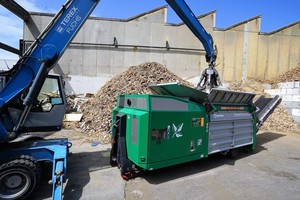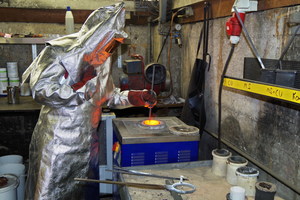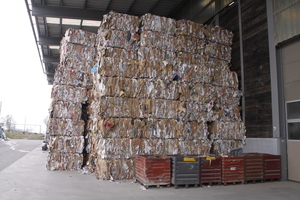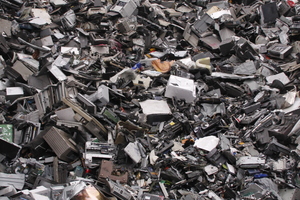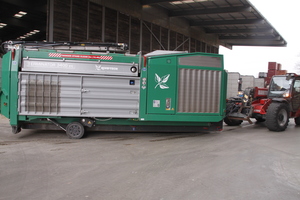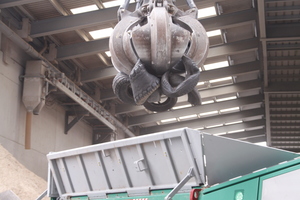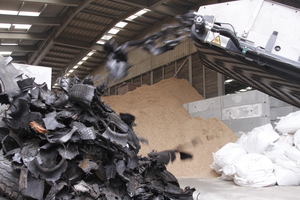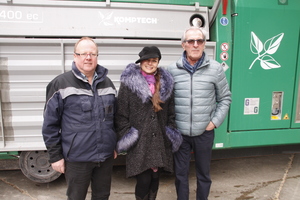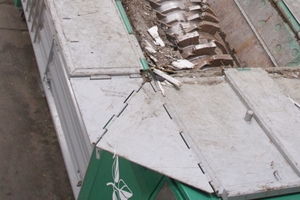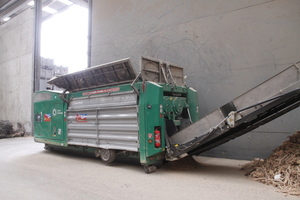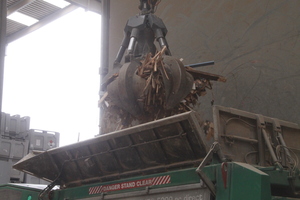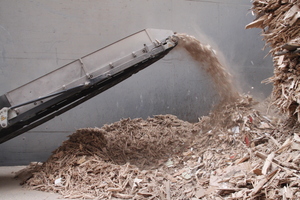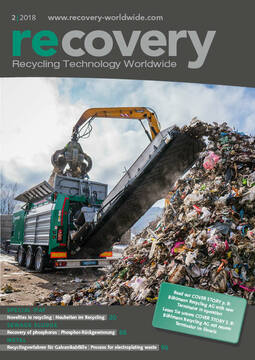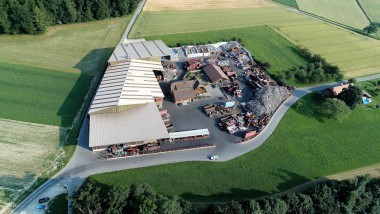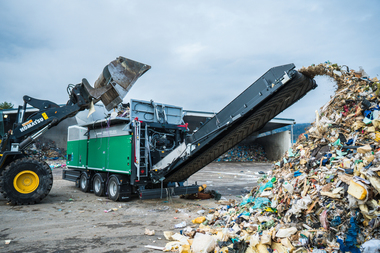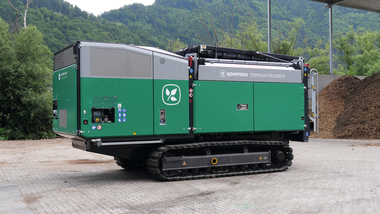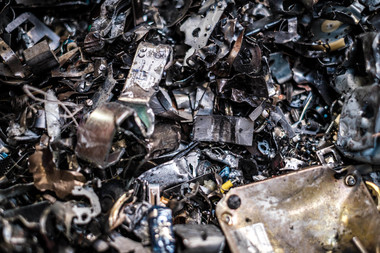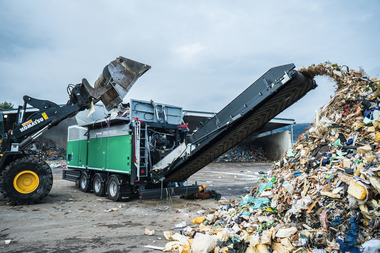Interview Bühlmann Recycling AG
recovery: It‘s a remarkable progression, from a 1970s farm to a recycling organisation with six locations and nearly 200 employees. How was this rapid and steep rise achieved?
Hansueli Bühlmann: You‘ll always get further, faster, when you work 16 hours a day, six days a week, than if you only work a 7- to 8-hour day. Success will come more or less automatically as soon as you really put your heart into what you do. I constructed the first buildings entirely, with my father, using only an old excavator.
Even at an early age, I was thinking how good it would be to reprocess materials at high quality, to obtain the purest possible fractions at the end of the process. And I started very early at recovering value from things that other people, at that time, still considered worthless rubbish and were glad to be rid of. In those days, the price differences between simple scrap and well sorted metals were very significant - up to 250 Swiss francs. And those who took the necessary trouble, made their money. I found that fascinating.
And then I got a couple of really good tips from friends and colleagues on how the market worked, and where you can buy good quality feed material - and that, too, was also very important for me.
recovery: Have you evolved any guidelines, or a philosophy, for your continuously growing business?
Hansueli Bühlmann: Yes, the philosophy, of course, grew up only with time and experience. My target is to pursue wealth creation in depth, I aim to create jobs in our region, and I always want to have the material from within the region, to keep transport costs low, and the concept of sustainability also plays an important role here. I aim to keep processing of the materials here, on the spot, and also to supply the further processors from here. Another part of my philosophy is to sell the highest possible percentage of our processed material here in Switzerland, as far as prices will permit. If that plan doesn‘t work, we‘ll also go to Europe, and only then, overseas. We here see ourselves as a regional company.
recovery: How are you ahead of other recyclers, what accounts for your success?
Hansueli Bühlmann: We‘re not Switzerland‘s biggest recycler, but the advantage we most certainly do have over others is our value chain - our wealth creation. That, for its part, is possible only because we have a broad spectrum of systems for processing - that enables us to process the waste in such a way that it can be used immediately. No one else in Switzerland has that.
The volume of waste has grown, but wealth creation, and not mass, was always important to me. The big companies operate only on mass, and not on wealth creation.
recovery: You mention your broad and diversified fleet of machines for systematic separation and sorting of materials. How is the decision on a new purchase made?
Hansueli Bühlmann: I analyse the market. A couple of years can also pass before the final decision is taken. I visit reference installations, look at how processing is done there, and then ask myself how that could fit in with our range of materials. And for large investments – which most of our purchases are - I must have confidence in the supplier company.
recovery: Your latest acquisition is a Terminator 3400 ec – why this shredder, in particular?
Hansueli Bühlmann: The Terminator goes back a long way with us, we‘ve bought seven Terminators in all, and three of those are still in use today at various locations. Depending on the new developments and the applications, we have returned the older machines, and bought new ones. Personal contact also plays an important role here. Back then, in 2002, Peter Grepper of Getag Entsorgungs-Technik AG invited me to take a look at the machine, and we went together to see reference installations. There, I compared what materials we have, and what materials are processed there. I wasn‘t, initially, totally convinced, we already had a set of scrap shears, and I didn‘t, at that time, see any need. But then there was a change in the flows of waste that we were receiving, and also the Terminator was repeatedly improved. That was when I took my decision to purchase the first Terminator in 2003. We were also starting, at that time, to separate material flows and to buy machines systematically for specific preparation tasks.
Then, in the course of time, we bought a total of seven Terminators. One was a Terminator XF for pre-shredding of life-expired domestic electric appliances, including, for example, condensers, so that they could be separated from the outer casing and the coil was retained intact and could be separately further processed. I was also one of the first to have the idea of using the Terminator for processing of electrical scrap, and that proved to be very worthwhile. We have a shredder with a much greater throughput for this purpose, but the Terminator is a rational cost, good solution if you intend to start in the processing of electrical scrap.
We currently use our three Terminators for pre-shredding of plastics, rubber, electrical cables, oversize items, and railway sleepers, before the material is fed either to sorting and further comminution, or directly to comminution.
recovery: Why have you remained loyal to the Terminator for so long?
Hansueli Bühlmann: The benefit of this machine is that you can use it both for ripping and cutting, depending on how wide you set the gap on the cutters. That gap can be set hydraulically to the required size at the push of a button. This makes it universally usable, and it doesn‘t have a tendency to generate dust.
We can also use different types of Terminators from type U - XF to suit the material, to shred it either coarse, fine or extra fine. And the Terminator, thanks to its mobile design, can be used wherever it is needed. We make sure that every machine is „polyvalent“, i.e., that it can be used for various materials.
recovery: You also process wood - a totally different materials environment ...
Hansueli Bühlmann: Yes, initially I also didn‘t process this material quite as far. Nowadays, we produce a wood-chip quality that can be supplied directly to the chipboard industry, or to cement plants. We also need suitable machinery for this, of course. Sales are guaranteed provided we are capable of supplying constant high quality. But you do need the right machines for this, of course. We use two Komptech Crambo 5200 ec direct universal shredders. These are designed for shredding of green waste and wood. Two low-speed contra-rotating shredder drums reduce the wood to the required size without producing large quantities of fines or dust.
recovery: Your large range of prepared materials make Bühlmann Recycling AG a successful company - how do you see the future?
Hansueli Bühlmann: We now have around 170 employees and six locations - that‘s not how I originally planned it - you simply have to move with the times, and take account of changing markets. You will not be able to survive on the market if you don‘t keep moving dynamically and develop further, and try out new things.

